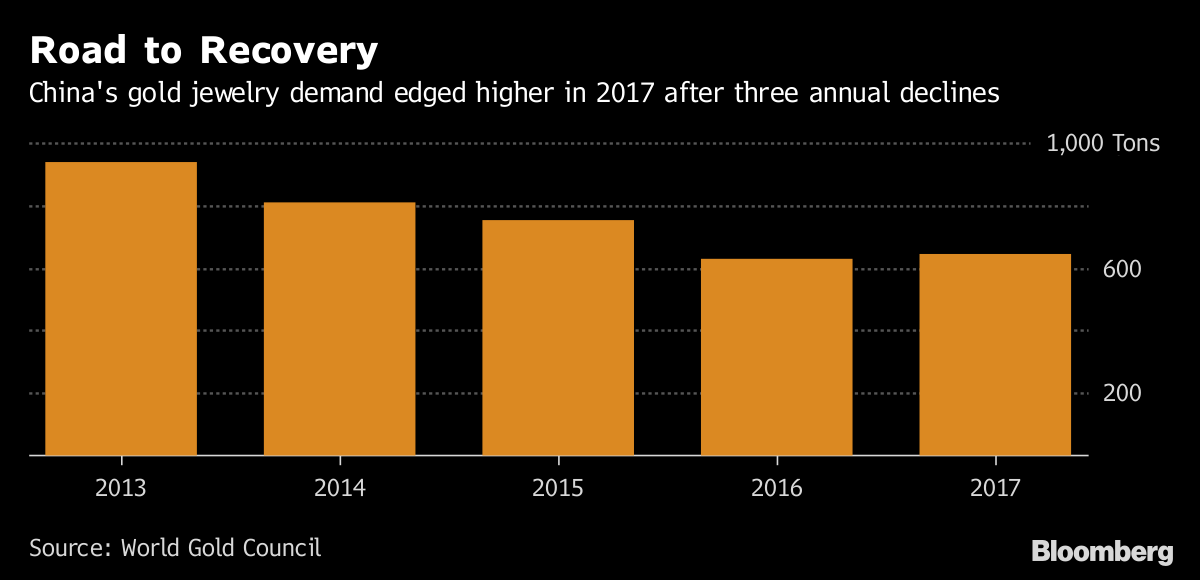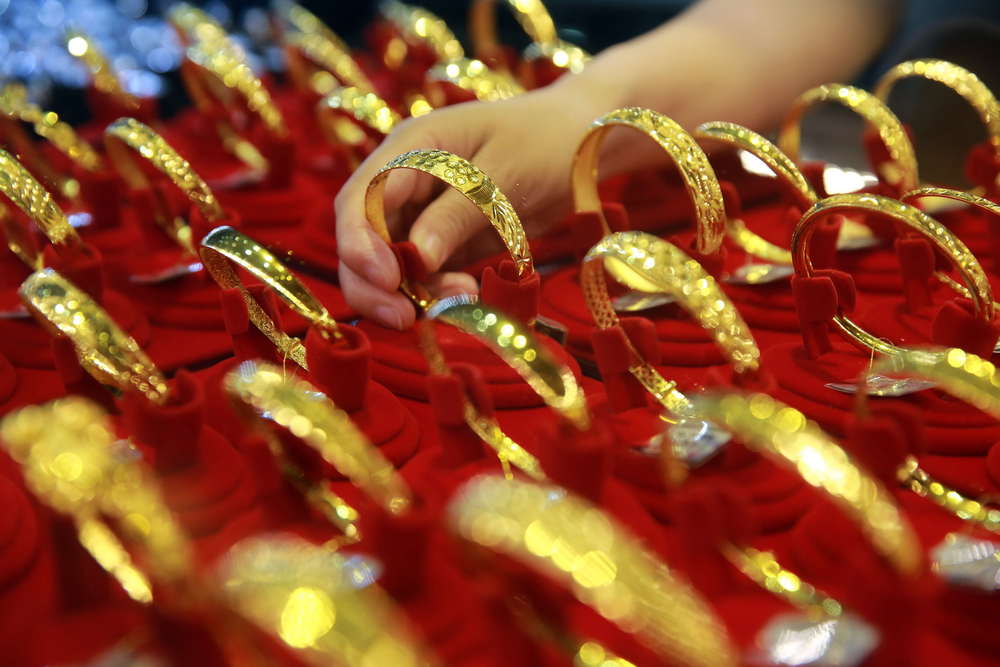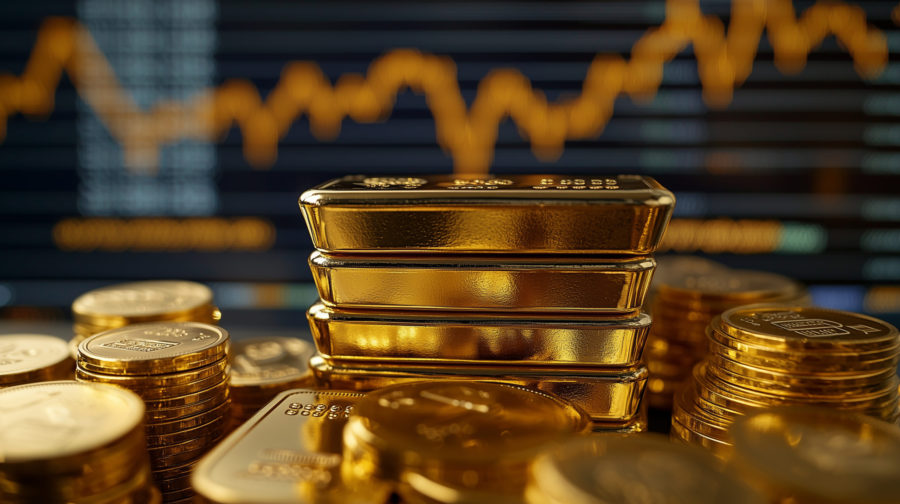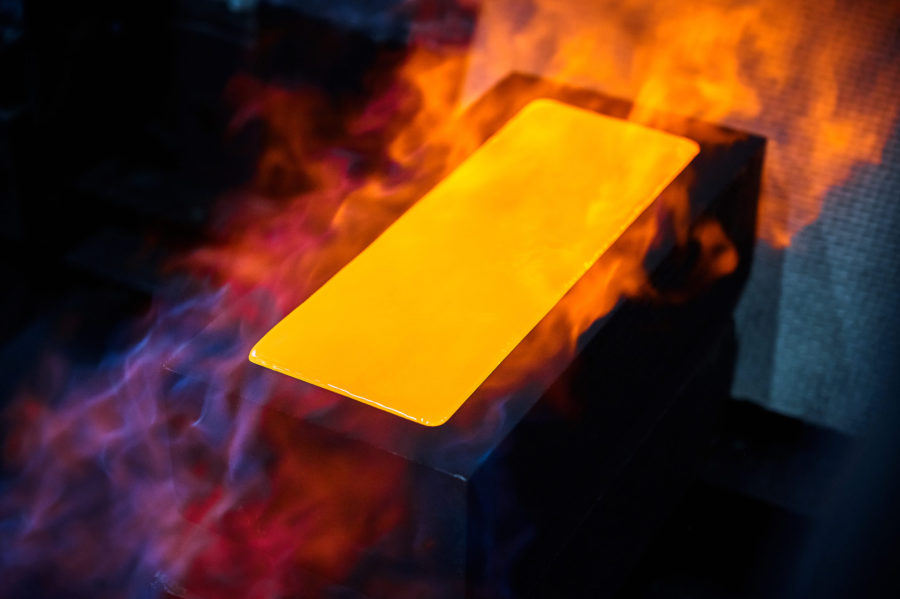The nation’s demand for gold jewelry climbed 10 percent last year to almost 700 metric tons as the wealthy increased purchases and consumption improved in second and third-tier cities, according to the China Gold Association. Buying of ornaments represented more than 60 percent of the 1,090 tons of gold consumed in China last year and made up a third of world jewelry demand.

Jewelry consumption in the second half was buoyed by holiday purchases and by retailers more effectively targeting the needs of customers, according to the World Gold Council in a report Tuesday, estimating that demand was 9 percent higher in the six months through December than a year earlier.
“We’re still optimistic for the coming year, even though we have a high base,” said Kent Wong, managing director of Chow Tai Fook Jewellery Group Ltd., the world’s largest jeweler by sales. “The trend of growth will continue.” Prices in China have increased, and the rising market is giving people more confidence to buy jewelry as an investment, not just for everyday use as a decorative item, he said in an interview last month.

The company’s profits jumped more than 40 percent in the six months through September, with sales growing 16 percent in mainland China and 13 percent in Hong Kong and Macau. Property and stock market rallies have generated wealth and lifted spending, said Wong. Home sales climbed to a record in December, shares hit the highest in two years last month and the economy accelerated last year for the first time since 2010.
Rising demand in China could help boost global prices because of the size of the market. Gold in London advanced to the highest since 2016 last month as inflation fears and dollar weakness fueled demand. Holdings in bullion-backed exchange-traded funds are up about 40 percent in the past two years and increased to the largest stash since 2013 in January.
While gold has slid 2.7 percent from last month’s peak to $1,329.75 an ounce, a succession of higher highs and higher lows on the charts since the start of last year has encouraged bulls. Chinese buying of gifts for Lunar New Year also traditionally supports prices in January and February, with the Year of the Rooster set to morph into the Year of the Dog in the middle of this month.
China and Hong Kong could see single-digit growth in same store jewelry sales this year because of better consumer sentiment, said Mariana Kou, an analyst at brokerage CLSA Ltd. in Hong Kong. Another driver is that the expiring Year of the Rooster was an unusually long one, with two springs, Kou said, noting this is auspicious for marriages, and could lead to more births this year. Gifts of gold are traditional for weddings and births.
Rising wealth in China, and demand from Southeast Asia and emerging markets is unprecedented, Jeffrey Currie, global head of commodities research at Goldman Sachs Group Inc., said in a Bloomberg Television interview. “This has put in a bid into gold in an environment where typically it would trade down.”
Story by Ranjeetha Pakiam and Daniela Wei with assistance from Winnie Zhu and Corinne Gretler; edited by Jason Rogers and James Poole.






